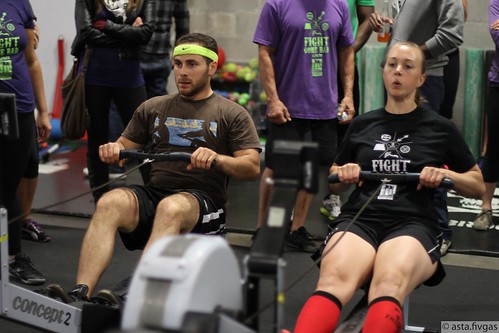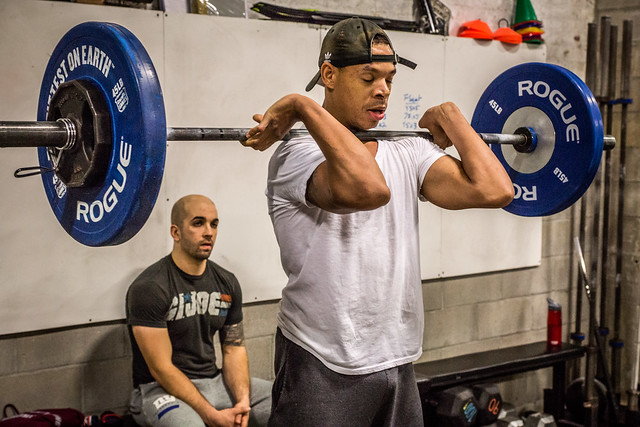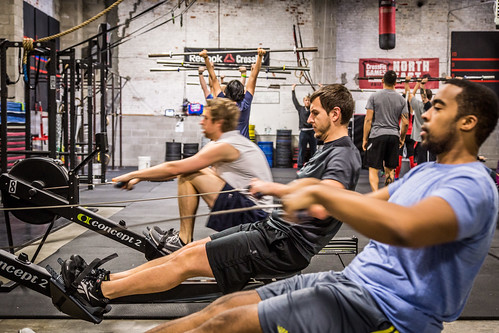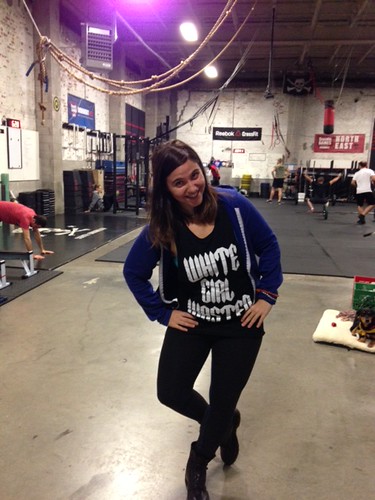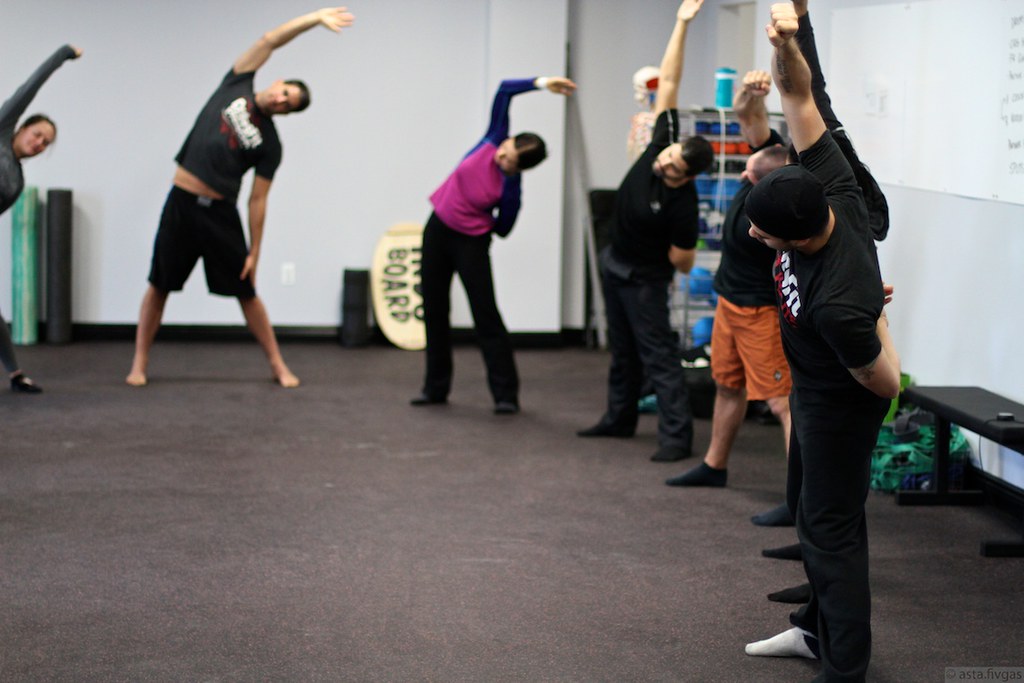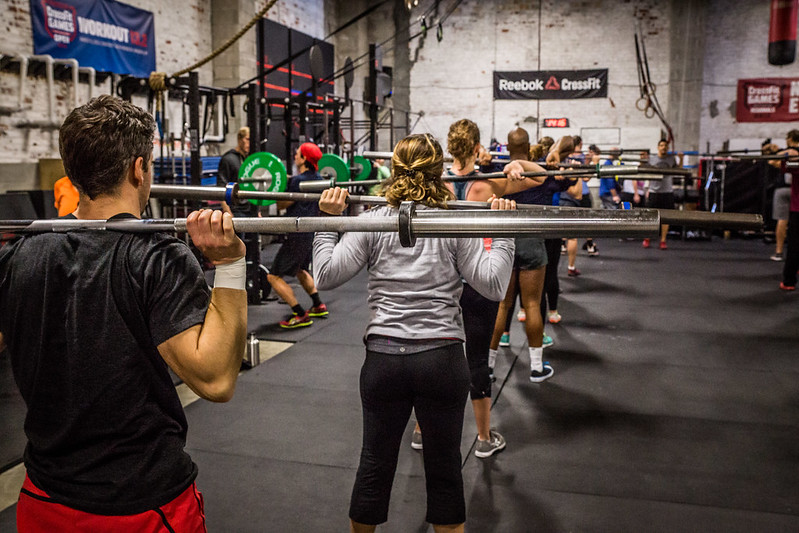Just a reminder that there are no 7:30 and 8:30pm group classes tonight as well as no Active Recovery. Otherwise we are operating on a normal schedule.
Tomorrow there are no 6am, 7am, 8am or 10am Group classes however we will be hosting a 12pm and a special 1pm class. The evening schedule will be normal from 4:30pm onwards.
 CFSBK OG and Pilates Maven, KH
CFSBK OG and Pilates Maven, KH
Pilates at CFSBK Starting January 7th!
Have you ever been told by a coach or PT that you have a weak core? Are you not sure what “keep your ribcage down” means? Do you suffer from a tweaky lower back after lifting heavy weights? Help is on the way! The Pilates Method can be great “accessory work” for a CrossFitter, not only because it improves flexibility and strengthens the abdominal and back muscles, but mainly because it can help you figure out HOW to use these muscles properly. Come join Kristin Hoesl (KH) in CFSBK’s first ever weekly Pilates class. We’ll go over neutral pelvis, engaging the transversus abdominis (say WHAT?), stabilizing the rib cage, and finding good shoulder girdle positioning. Additionally, although most of the abdominal work in Pilates is done by stabilizing a neutral spine, there’s also some spinal flexion involved, which can feel really good if you’re an avid lifter who spends most of their time in extension (or maybe hyperextension – we’ll go over that too). So if any of this sounds intriguing to you, come drop in on Tuesday nights at 7:30, starting January 7th. Mad abs, yo. And just a quick FYI, KH has been teaching the Pilates Method full time, both group classes and privates, since 2006. To read more about her training and experience, you can check out her website at www.khpilates.com, or email her at kristin(AT)khpilates.com.
Yoga at CFSBK and More Active Recovery!
In 2014 CFSBK will be also rolling out our new Pilates program detailed above as well as evening Yoga with Whitney H on Thursdays at 6:30PM and Saturdays at 10:00AM (starting January 2nd) as well as a new Thursday 7am Active Recovery with Coach Fox and a second Saturday AR class at 12pm with Coach DO.
Look Feel Perform Better Challenge Sign Up Info and Capacity Test
Getting geared up to sign up for the challenge? We’ve had a few people overlook where all the information (tracker, where to upload pics, resources etc) are hosted on the web page. When you click the fancy widgit on the top right of the screen it will take you to a new page with an expanded navigation menu on the left. There you can see the links to all the resources you’ll need for the challenge, including the new LFPB Forums where you can ask for support/advice from your fellow CFSBKers and Coach Fox. Please check it out!
Below is the 2014 Capacity test. We will be programming it as the WOD on Thursday, January 2nd which means you can do it in class then or on Friday where we offer split programming. Otherwise you can make it up at OG or in a pinch ask a coach and we’ll try to accomodate you performing the workout during a different class if you can’t come this Thursday or Friday and can’t make it to OG before the 5th.
“Cindy, Row Your Boat”
AMRAP 10 minutes:
5 Pull Ups
10 Push Ups
15 Squats
Rest 2 minutes
AMRAP 3 minutes:
Max Calories Rowed
____________________________
Have a happy and safe new years, everyone. CFSBK loves you.
